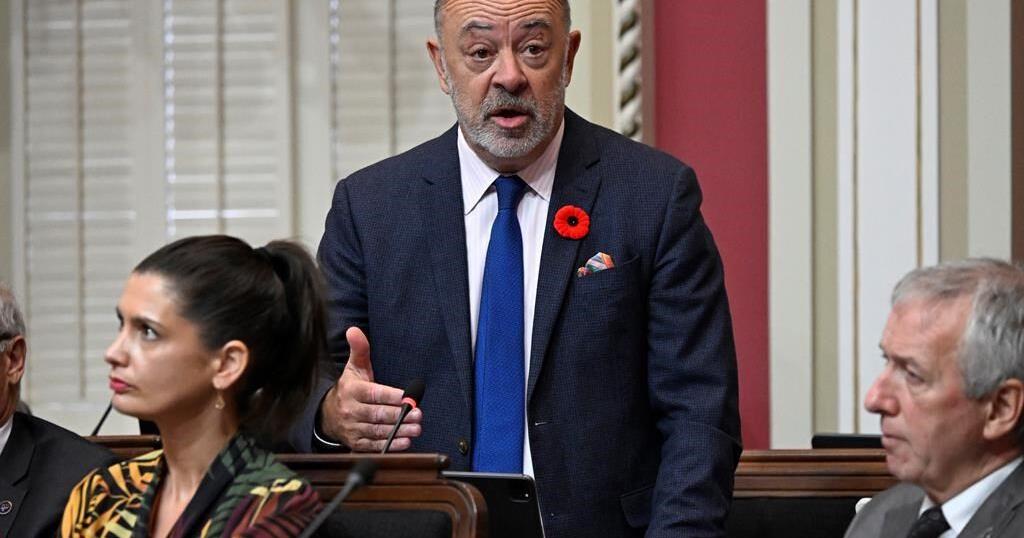TORONTO —
Some of Canada’s leaders have said that systemic racism does not exist in the country the way it does in the U.S. However, Canadian activists say the racism black people face in each country is no different.
Former Liberal MP Celina Caesar-Chavannes told CTV’s Your Morning on Wednesday that racial tensions do not stop at the border.
“When people think about racism they look at what’s happening in the States and they put on these blinders, and they presume that racism… only exists when you can blatantly see it happening — when someone’s being choked with a knee, when someone’s being shot at, when someone is dying,” Caesar-Chavannes said. “That’s not the case of our reality every single day. Systemic racism, microaggressions exist in our institutions.”
Protests began last week in Minneapolis in response to the death of George Floyd, a black man who died after a white police officer held his knee on Floyd’s neck for several minutes. The protests have since spread across other parts of the world and Canadians have joined in solidarity.
Despite a surge in anti-racism protests globally, Canadian author and activist Desmond Cole told CTVs Your Morning that is not a new movement in either Canada or the United States.
“Black people have literally been saying the same thing for generations and it feels like the desperation to be heard before — [that] we’re completely unable to live in this society — the desperation is what’s changing, but nothing that we’re saying is new,” Cole said in an interview on Wednesday.
Cole said that police are repeatedly sent to help when a crisis involves a black person because Canadians are still afraid of black people.
“We keep insisting that there’s no other way, but obviously somebody who’s trained in de-escalation, somebody who’s trained to talk to people, someone who doesn’t have a weapon, someone who can offer services and support, that person is obviously a better person to come and respond,” Cole said.
Cole said the federal government needs to look at other ways to help black people when they are in crisis rather than sending the police.
“When somebody is in crisis, what we do now is we say, ‘Let’s send several burly men with guns, who have a licence to kill to go and support somebody who may be in mental health crisis.’ We don’t care about the fact that maybe that person might be terrified of an armed response to their house.”
Caesar-Chavannes said racism in Canada can be seen daily when considering incarceration rates and health statistics.
“When you look at our health outcomes, when you look at our justice system and the overpopulation of our prisons with black and indigenous people, you have to really think about whether or not systemic racism does not actually exist in this country because I think it’s our lived reality every day,” Caesar-Chavannes said.
WHAT CAN BE DONE ABOUT RACISM IN CANADA
Caesar-Chavannes said politicians don’t have to look any further than the country’s Indigenous populations to understand that “racism has and continues to exist in Canada.”
Before steps can be taken to address racism in Canada, Caesar-Chavannes said there first needs to be “an accountability and an understanding [of] racism existing.” She said Canada’s leaders cannot throw around the term ‘anti-black racism’ without having concrete steps to help solve the issue.
“It needs to start with adequate, sustained and intentional funding for programs that address anti-black racism in a way that organizations [and] programs don’t have to keep seeking and looking for funding and jumping through hoops to get that funding,” Caesar-Chavannes said.
To do so, Caesar-Chavannes said “unusual suspects” — anyone who has “intersections of intersecting identities” — need to help drive these conversations forward and to suggest “ways for the government to actually create equity for equity seeking groups.”
Caesar-Chavannes explained that women, black women, Indigenous people, religious minorities and people with disabilities, among others, need to be part of the conversation to create change.
“We need to have those unusual suspects at the table. If you’re having the same conversations right now with the same people that you had conversations with two years ago, you need to really change and think about if you want, sustainable change and if you want lasting change — change that’s going to have a real impact with people on the ground,” she said.
At the beginning of the 43rd Parliament, Caesar-Chavannes shared on Twitter her 43 goals that she hoped to accomplish during the term, including increasing the number of black people in Cabinet, increasing the number of black staffers, and to understand that diversity is ubiquitous.
“We’ve not had an Assistant Deputy Minister (ADM) or a Deputy Minister (DM) of black heritage, a black person, in any of those positions since the formation of our country. And I think the federal composition of our system needs to be reflective of the population that it serves and that includes on the bureaucratic side,” Caesar-Chavannes said in an interview with Your Morning.
She quit the Liberal caucus in March 2019 to sit as an independent after alleging that Prime Minister Justin Trudeau had been hostile towards her.
POLICING AND CORPORATE POWER
Toronto community organizer and human rights activist Akio Maroon said in an interview with CTV News Channel that defunding the police would help address racism in Canada.
“Demilitarizing the police, defunding the police, that would be a start. I think Toronto’s police budget is $1.08 billion… And that is just way too much,” Maroon said on Wednesday. She added that that money could be spent elsewhere to better address the issue.
“The money that we are spending for law enforcement, we can move that money to mental health resources, we can have after school programs, we can educate our community members,” Maroon said. “There are other ways in which we could be looking at reinvigorating our justice system without this kind of carceral environment.”
In addition to the police, Cole said corporations can also be blamed for continued racism against black people, saying both of their powers should be disbanded.
While corporations including Nike, Ben & Jerry’s, Spotify and Amazon have taken to social media to share statements in support of anti-racism protests, Cole says they need to do more.
“Corporations have too much power like the police do. They are a huge part of this problem if not the main source of this problem, because all of this labour that poor people are doing is to serve these corporations while we die against it,” Cole said.
Amid the COVID-19 pandemic, researchers have found that black people are at a higher risk of in-hospital death compared to white people.
“We’re living in a crisis right now where people are dying of a communicable disease that we have never seen before this year, and corporations are still forcing people to go to work for minimum wage,” Cole said. “Black people are disproportionately dying of COVID, working for these corporations instead of staying home.”
Let’s block ads! (Why?)

Source link
Related





























